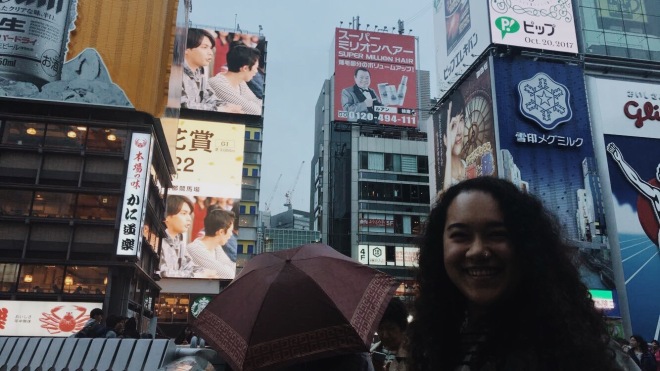A small Japanese-English electronic dictionary permanently resides on my host mother’s kitchen table in Kyoto; a creaky bridge over the chasm that is our language barrier. In such close quarters, the crash-course conversational basics don’t get you very far.
Dinner table topics often revolved around food — a universal language if there ever was one. Translations of “asparagus lettuce” and “persimmon,” varieties of tofu preparation, methods of de-boning fish with chopsticks (I still don’t understand how anyone has the dexterity for this skill). We learned the most about each other through this struggle to communicate seemingly simple concepts. My host mom (Okaasan) was surprised that my family has a persimmon (柿 kaki) tree, since many European and American students she has hosted in the past had never even seen one before coming to Japan. But some of these discoveries were more personal than others.
With every meal, Okaasan placed aside small portions of each dish on a small plate. After expressing our thanks for the food, “gochisousama deshita,” she would bring the plate to the tatami room and place it as an offering to her son, who she lost to cancer ten years ago. The shrine sat in the corner, a framed portrait surrounded by a few candles. On one of the first nights I spent in her home, she told me this is why she was drawn to host foreign students — we’re children under her roof, however temporarily.
She has been through so much, but she is seriously unstoppable. When she isn’t working a full-time kindergarten job, she teaches piano to local kids in the evening, and sings with the Kyoto Ladies’ Choir on weekends. And I was only one of three foreign students she was responsible for hosting in October. Okaasan’s was also home to a German girl named Barbara and a French boy named Dorian. I could write an entirely separate post on cultural insights from living with these two, but I have to narrow the scope of this month-long summary somewhere. Barbara and Dorian both speak English, like myself, and they also study Japanese, unlike myself, so their dinner table presence was definitely helpful.
Even then, it’s pretty exhausting to maintain long conversations through multiple layers of translation. In times like these, Okaasan would pull out her laptop and we would just watch kawaii internet videos and “aww” at small, fuzzy animals. It was obscure, but undeniably a good time.
After dinnertime, it was showertime. This strict nightly routine is a very Japanese thing, as confirmed by every other PacRim student’s host family experience. I’ve always wrapped my hair up in a towel after showering, a habit which my host mom found silly. She would tease me for my towel head as I walked by the tatami room and said goodnight, “oyasumi-nasai,” and I’d fake embarrassment. Just like the evening rituals, this interaction became kind of routine.
As I was packing on the night before leaving Kyoto, Okaasan knocked on my door and gave me a brand new sakura-patterned terrycloth hair wrap.
The next day’s 5 a.m. send-off was sentimental.
I had never been in a foreign place for long enough to know what culture shock feels like, until Kyoto. One month with a substitute mother and an unfamiliar language will do that to a person. The month in whole was introspective, and kind of impossible/unnecessary to summarize in a blog post.
I’m missing the consistency that Kyoto offered, but realizing that consistency is not exactly what I signed up for. Of the many expectations I had about this trip, settling into such a firm routine like I did in Kyoto was not one of them.
Currently: Fuzhou, China, where things are speeding up a bit.

Honen-in temple on my last day in Kyoto, Oct. 27. 
Attacked by deer in Nara, Oct. 13. 
Kinkaku-ji temple, Oct. 11. 
Chaotic local sports day competition in which I made a complete fool of myself, Oct. 8. 
Commuting home, Oct. 4. 
Day trip to Osaka, Oct. 20.


Beautiful, poignant insights! Thanks for these glimpses into your world.!
LikeLike
What in tarnation is a persimmon
LikeLike